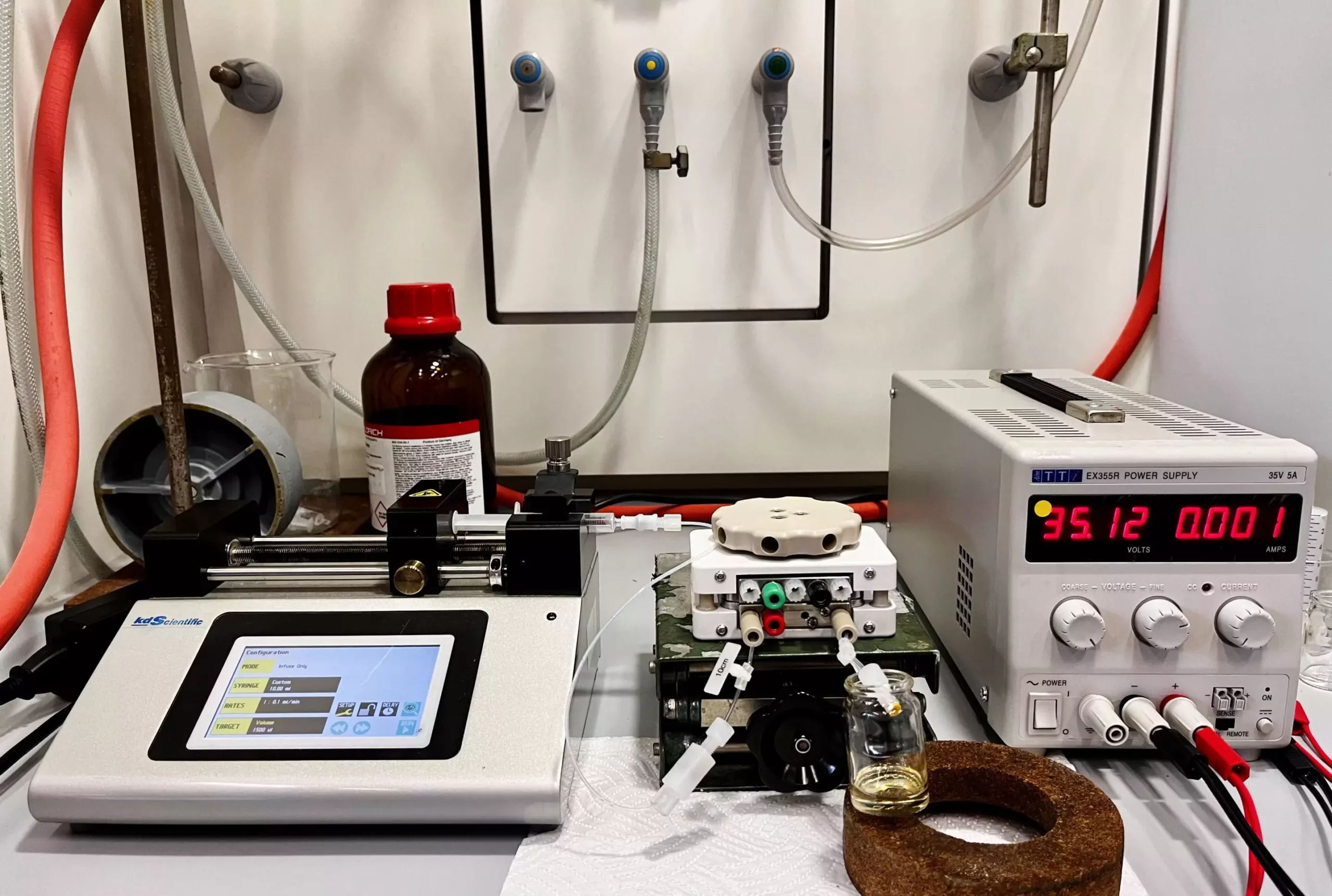In order to meet the ever-growing demands of society, chemists are constantly seeking new synthesis methods to obtain products that do not exist naturally. This includes the development of new pharmaceuticals, cleaner fuels, and biodegradable plastics. It is crucial for chemists to create complex organic chemical compounds from simpler reagents, a process known as organic synthesis. However, these successive reactions are intricate and require precise control. To minimize the use of resources, each reaction step should have optimal yield. This poses a significant research challenge, as achieving better control and simplifying these reactions is of utmost importance.
A research group at the University of Geneva (UNIGE), in collaboration with Cardiff University, has made a groundbreaking discovery in the field of chemistry. They have found a way to use an external electric field to control and accelerate chemical reactions, essentially acting as a “switch.” This innovative work, recently published in Science Advances, could have a profound impact on the development of new molecules. It not only enables more environmentally friendly synthesis but also provides a simple means of externally controlling a chemical reaction.
Every molecular transformation involves the movement of electrons, which are negatively charged elementary particles, from one place in a molecule to another. Since electrons can be influenced by an external electric field, it is theoretically possible to electrically control chemical reactions. While this approach seems simple and promising, it has faced several limitations and has not been widely implemented. However, the research teams led by Professor Stefan Matile from UNIGE and Professor Thomas Wirth from Cardiff University have successfully activated an organic chemical reaction using a simple electric field.
To accomplish this feat, the researchers designed an electrochemical microfluidic reactor. This compact device exhibits a clear dependence between the progress of the chemical reaction and the intensity of the applied electric field. The reactor consists of a small box in which the reaction mixture can circulate between two electrodes that generate the electric field. These electrodes are square plates measuring 5 cm x 5 cm and are positioned as close together as possible. A quarter-millimeter-thick sheet separates the electrodes and contains the flow channel for circulating the molecules. Carbon nanotubes coat the electrodes, causing the reactants to interact weakly with them. As the reactants flow through the reactor, they are exposed to the electric field, which induces electronic polarization in the molecules and activates the chemical transformation.
Typically, creating desired chemical bonds with high yields requires complex and multi-step strategies involving numerous intermediates. These strategies consume significant resources and energy. However, the new electrical device proposed by Professor Matile and Professor Wirth could simplify these strategies and reduce the carbon impact of chemical syntheses. The device has the added advantage of being easy to control, functioning as an accelerator for electrons during molecular transformations. Although further research is required to unlock the device’s full potential, this method has the potential to revolutionize organic chemistry in the near future, making the production of drugs, fuels, and plastics greener and more controllable.
As society becomes more aware of the environmental impact of various industries, including chemistry, the need for greener alternatives becomes paramount. The ability to control and accelerate chemical reactions using electric fields opens up exciting possibilities for sustainable synthesis. By simplifying reaction strategies, reducing resource consumption, and providing external control, this innovative approach has the potential to transform the way we produce important compounds.
The development of new synthesis methods is crucial to meet society’s demands for various products, including pharmaceuticals, fuels, and plastics. The use of electric fields to control and accelerate chemical reactions represents a significant breakthrough in the field of chemistry. This approach, pioneered by researchers at the University of Geneva and Cardiff University, allows for the creation of more environmentally friendly synthesis processes and provides simple external control over reactions. By simplifying complex strategies and reducing resource consumption, this method paves the way for a greener and more sustainable future in chemical synthesis.


Leave a Reply